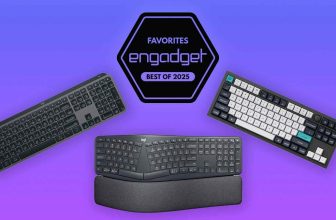For anyone who wants to enjoy vibrant, faithful visuals on their smart TV screen, it’s important that you have access to one of the two top HDR formats: HDR10+ or Dolby Vision. This video technology makes what you’re watching more realistic, colorful, and detailed; it gets you closer to the initial filmmaker’s vision while also creating a more engaging viewing experience.
When shopping around for a smart TV, choosing between the two options might be among the hardest decisions to make. Here’s what you need to know.
How does HDR improve your TV?
Top options improve color and contrast
High Dynamic Range is a technology that boosts brightness and contrast, creating a more vivid picture while still maintaining detail. It’s of particular importance whenever you’re watching a scene that has both light and dark sections. Bright elements maintain their detail without washing out, while darker portions of the TV stay sharp, avoiding any shadowing or blurring that may obscure detail.
Basically, HDR makes scenes finer, and as a result, more realistic. Colors are authentic, and because what you’re watching feels closer to real life, films and TV shows tend to be more immersive. HDR improved upon Standard Dynamic Range (SDR), which had a limited color range and low brightness.
What are the different types of HDR?
HDR10+ and Dolby Vision are the top formats
Currently, the top options when it comes to HDR are HDR10+ and Dolby Vision. Both are dynamic formats, which means they adjust color and contrast on a scene-by-scene basis. However, Dolby Vision offers higher peak brightness and a slightly wider color depth, with 12-bit color versus the 10-bit color offered by HDR10+. Another key difference is that HDR10+ is open standard whereas Dolby is a licensed format. That means manufacturers that want to include Dolby Vision in their TVs must pay a royalty fee.
These two formats are improvements on HDR10, which features static metadata. Color and brightness is determined once and set for the entirety of the title, resulting in less variance and a greater potential for scenes to look distorted, blurry, or oversaturated.
Most recent TVs tend to support one format or the other; Samsung has opted for HDR10+, for example, while LG offers Dolby Vision. Some models, like those from TCL, offer both.
Matching formats from TV to source
Compatibility is crucial for quality
It’s important to match up the format available on your TV display with the format of the title you’re watching. If your TV displays Dolby Vision but the title you’re watching isn’t available in Dolby Vision, then you’re not unlocked the full potential of that format.
In fact, you might be losing a fair bit of quality. That’s because in most cases, your dynamic format will revert to HDR10, a static format, if your display isn’t matching your source material. For most consumers across most media, the difference between Dolby Vision and HDR10+ is going to be subtle, if at all recognizable. Howver, the difference between these two formats and HDR10 is appreciable.
There is no uniform division between streaming services for the two formats. For some time, much of Amazon Prime and some of Disney+ featured titles in HDR10+, while Dolby Vision is more commonly found in Netflix and Apple TV+ libraries. That line is starting to blur, however, as libraries fill up with titles that are available in either HDR format. With so many consumers subscribing to a variety of streaming services, it’s not practical to decide on one single format since you’re likely going to encounter both.
Choose a smart TV with both formats
HDR10+ and Dolby Vision provide flexibility and coverage
Dolby Vision is technically better than HDR10+ as it offers a great range of which to enjoy media; however, that edge only more or less exists in a vacuum. The quality of the HDR format you’re watching is dependent on the quality of your TV’s display technology as well as the quality of the source material you’re watching. Only if you have a high-end TV with advanced processing playing content that has quality mastered dynamic metadata will you achieve the most potential. Poor mastering, compression of data due to streaming restrictions, and even lighting in your room can have subtle effects on the HDR appearance.
It’s just too difficult to try to choose one format over the other. The differences between the two are slight, and with so many streaming services and library titles divided between the two, it doesn’t seem like you can really find the right answer. WHile Dolby Vision was more prevalent for some time, HDR10+ is gaining in popularity. Still, it doesn’t seem like either one is going to go away.
Instead of looking for a TV that offers one, go for the model that offers both. Get Dolby Vision and HDR10+ and enjoy everything you’re watching to its fullest.
Trending Products

Wireless Keyboard and Mouse Combo, ...

Lenovo New 15.6″ Laptop, Inte...

Dell Inspiron 15 3520 15.6″ F...

Acer Nitro KG241Y Sbiip 23.8” Ful...

Wireless Keyboard and Mouse Combo, ...

Zalman i3 NEO ATX Mid Tower Gaming ...

GAMDIAS ATX Mid Tower Gaming Comput...

Sceptre Curved 24-inch Gaming Monit...

Acer SH242Y Ebmihx 23.8″ FHD ...









